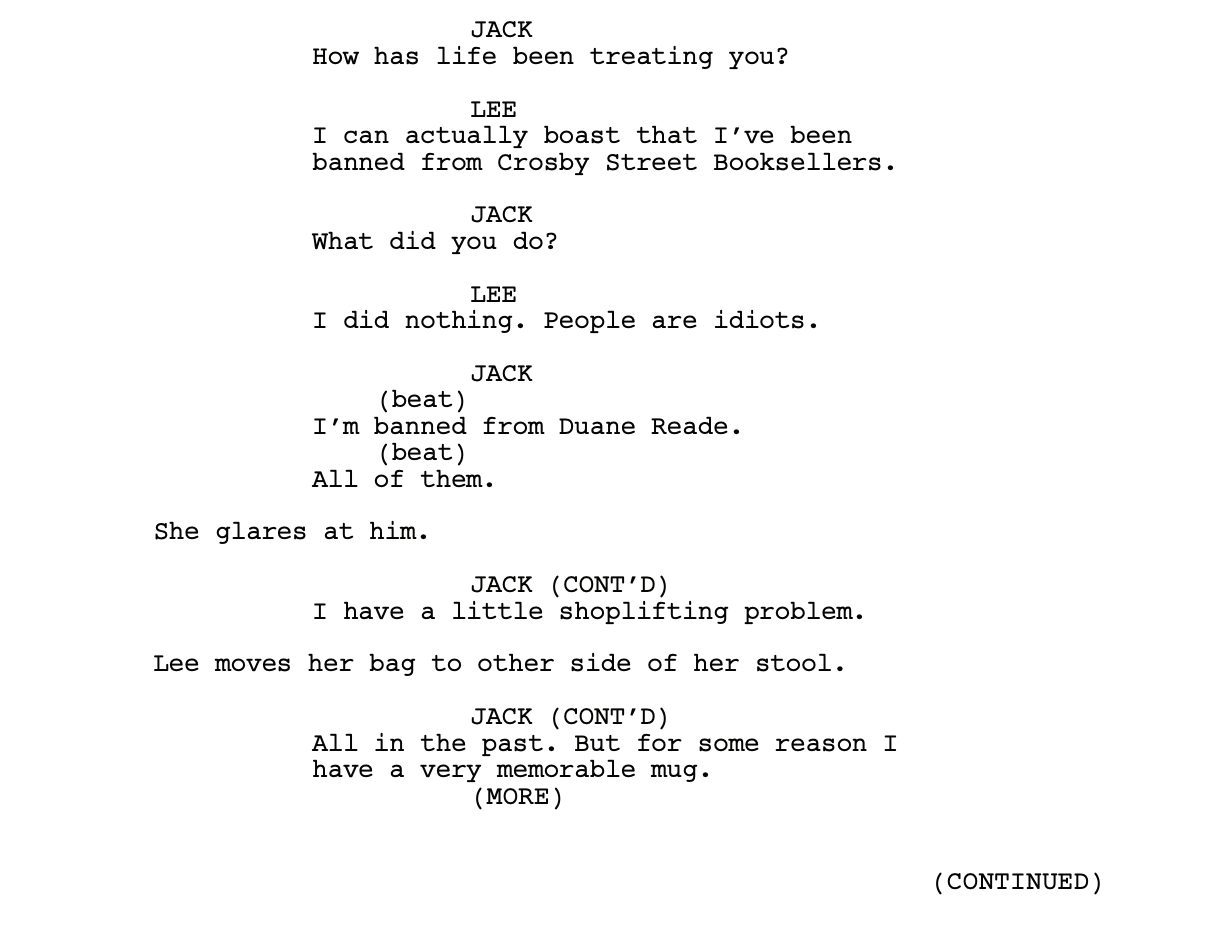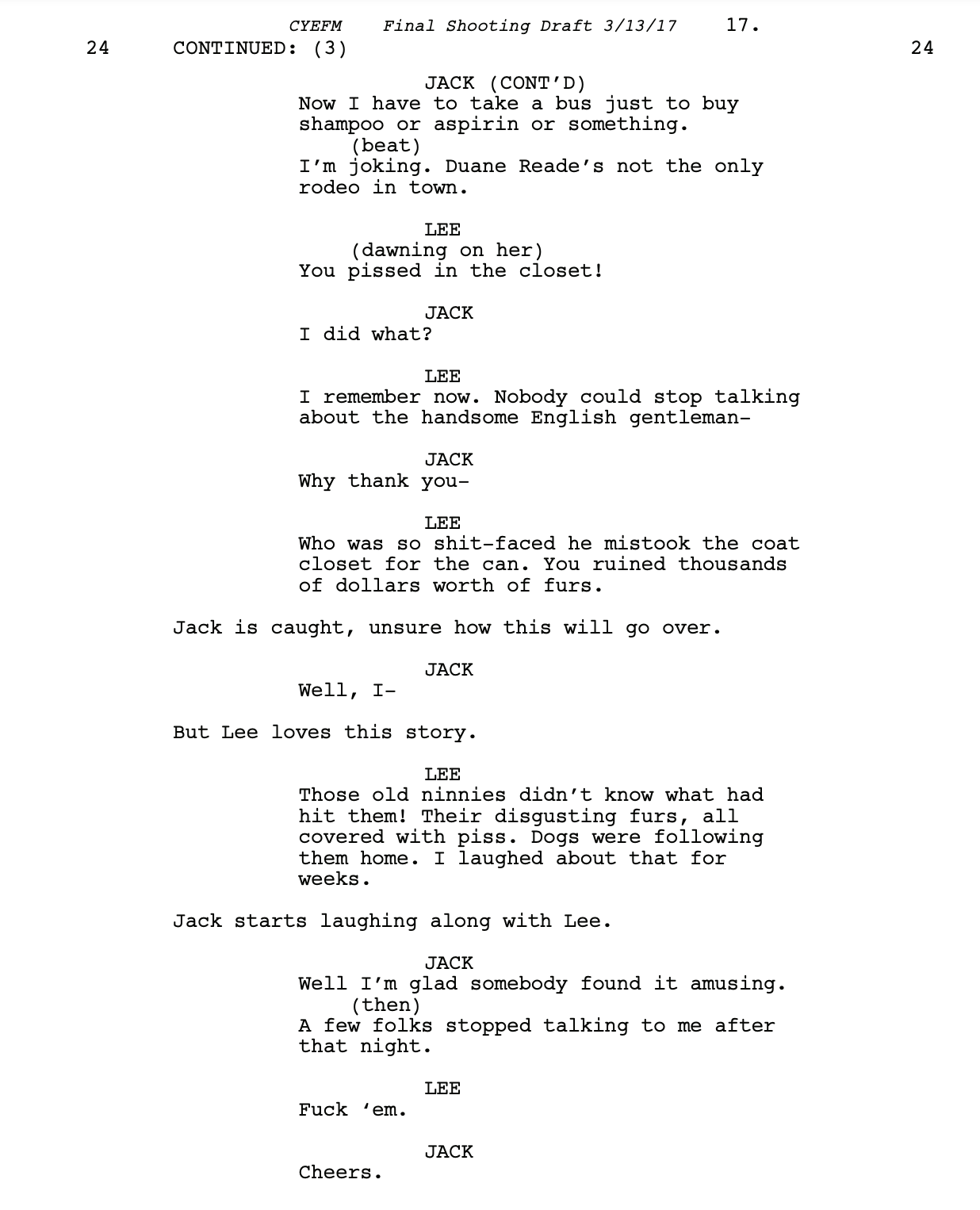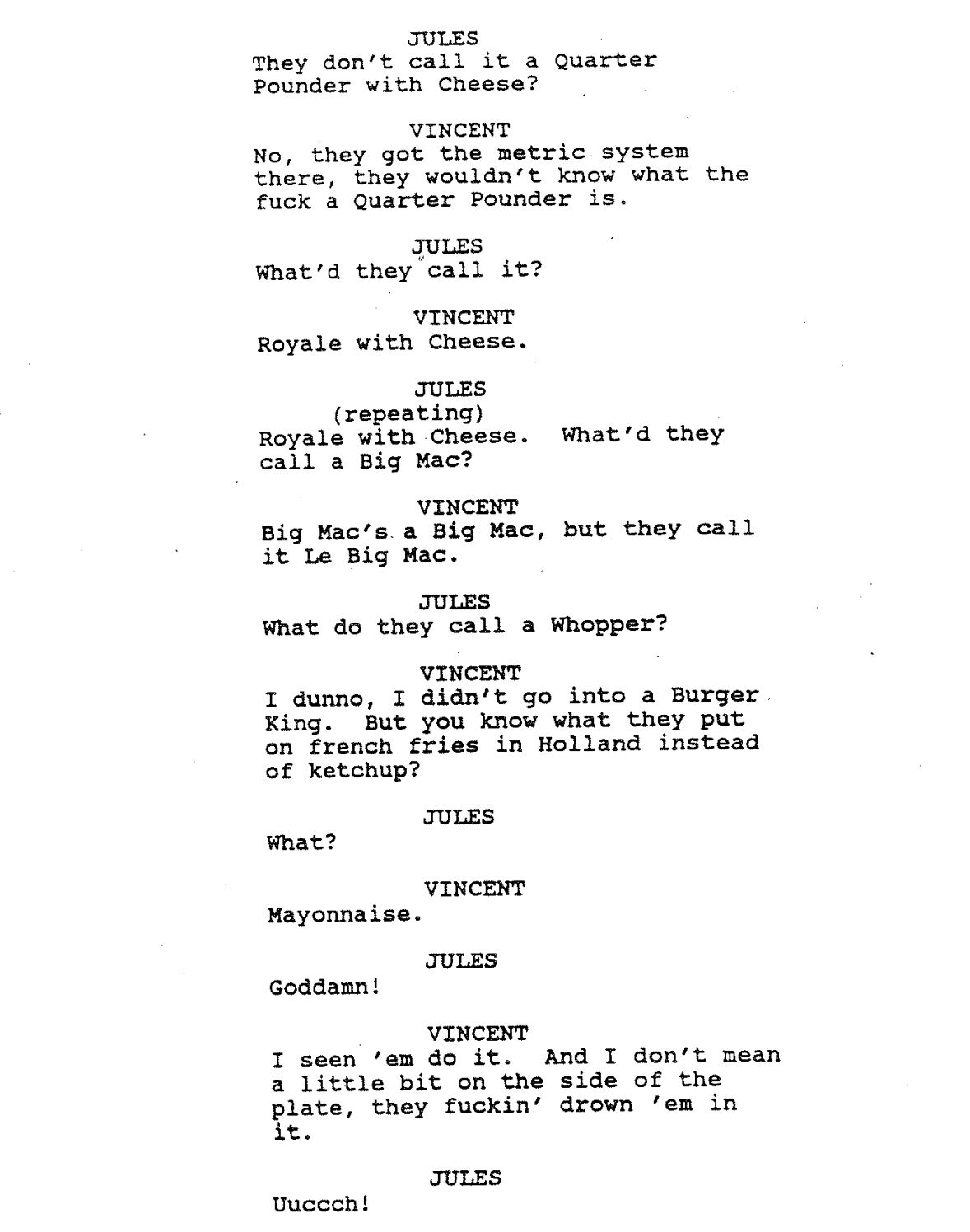WRITING YOUR SCREENPLAY WHILE SOCIAL DISTANCING: DIALOGUE
If you’re persistent, you’ll occasionally find yourself in this situation as a writer: You sit down to create a scene between two characters and the dialogue flows swiftly and seamlessly from your pen. It’s like a witty tennis match. You’re having so much fun and you could keep going and going. When the writing day is over, you think, “Dang! I have a really good ear for this! I’m so intuitive!”
Here’s our question this week:
Does skill with dialogue mean a writer has a natural feel for how people talk (in the way that someone has natural rhythm or an eye for design)? Or, is dialogue a craft that a person can learn?
Perhaps it’s a little bit of both.
We think good dialogue comes down to pretty much one thing: FRICTION.
Yes, friction, which is defined by the Oxford English Dictionary as:
1.) the resistance that one surface or object encounters when moving with another
2.) the action of one surface rubbing against another
3.) conflict or animosity caused by a clash of wills, temperaments or opinions
You are writing a motion picture, after all — and the force that creates motion is friction. Dialogue is the vehicle.
There’s a reason Mike Nichols famously stated, “There are only three kinds of scenes: a fight, a seduction and a negotiation.” These three scenarios naturally pit one force of will against another and the result is friction.
The goal is to bring two different elements into the same beaker, then watch the natural chemical reaction. Dialogue sizzles when scene partners express themselves in opposite ways or have contrary belief systems, attitudes or approaches to life.
What happens when hot meets with cold, slow meets with fast, smart meets with dumb, impulsive meets with careful, Democrat meets with Republican?
Let’s look at how a few scripts we love create friction with dialogue.
CAN YOU EVER FORGIVE ME? (2018)
Screenplay by Nicole Holofcener and Jeff Whitty
Based on the book by Lee Israel
Look closely and you’ll see that this is a seduction scene, but what makes the dialogue unconventional is the specific tactic by which Jack is trying to “seduce” Lee.
Jack tries to show Lee how vulgar, witty and literary he is in order to win her friendship. Lee, by bringing up Jack’s closet pissing, calls him out for not being the cool guy he’s desperate to be… BUT it’s over being a loser that these characters genuinely connect. Seduction complete.
ERIN BROCKOVICH (2000)
Written by Susannah Grant
In this negotiation scene, Ed tries to justify his inaction by throwing every obstacle he’s ever overcome at Erin, hoping that it absolves him of having to do the right thing.
This is something to note when writing dialogue: When we know we’re wrong or feel guilt, we will talk ad nauseam trying to prove our correctness or innocence. Notice that Erin, who in this scene has actual conviction and a backbone, doesn’t have to say much. She doesn’t have to convince herself that fighting for the people who have been poisoned is the right thing to do.
HIS GIRL FRIDAY (1940)
Screenplay by Charles Lederer
Based on the Play "The Front Page" by Ben Hecht & Charles MacArthur
Hildy negotiates with the Police Lieutenant to let Bruce out of jail. The Lieutenant is slow and compromised. Hildy is hot-headed and quick. This opposition in nature and attitude is what makes for a good back-and-forth dynamic between the two characters.
Generally, it also makes for good comedy when people — like the Lieutenant — are clearly corrupted and in the wrong, yet try to wield authority over somebody who is onto them.
Screwball comedy is a great genre to study if you’re trying to brush up on dialogue because it’s fast and coarse, much like a game of table tennis.
MIDNIGHT COWBOY (1969)
Screenplay by Waldo Salt
Based on the novel by James Leo Herlihy
Another scene about pissing!
We wanted to include this because it’s a friendship scene. Ratso is essentially dying on a bus and his friend Joe tries to make him feel better by getting him to laugh.
It’s a sweet, genuine kind of seduction, trying to get somebody to laugh in the face of death. It’s also a great contrast — laughing when something is desperately sad.
POSTCARDS FROM THE EDGE (1990)
Written by Carrie Fisher
This dialogue works particularly well due to Suzanne and Doris’s opposite natures. Doris (the mother) is full of feeling and premonition while Suzanne (the daughter) is cynical. One is over-the-top; one is even-keeled.
The friction is caused by Suzanne’s need for her mother to come down to earth and by Doris’s need for her daughter to take her flights of fantasy more seriously.
Mike Nichols, who directed this film, would probably call this a negotiation.
PULP FICTION (1994)
Screenplay by Quentin Tarantino
Story by Quentin Tarantino and Roger Avary
It’s as small as debating whether the correct pronunciation is “po-tay-toh” or “po-tah-toh.” This scene proves the debate, no matter how seemingly trivial, is still a debate and creates friction.
Sometimes a Samuel Beckett-like scene in which two characters contemplate the nature of something small really gives us a lot to chew on as readers / an audience. Two hit men contemplating small cultural differences in a corporate world does a lot to humanize the hit men.
SORRY TO BOTHER YOU (2018)
Written by Boots Riley
Like His Girl Friday, this is a negotiation. You know you have a good scene when one character needs something from their scene partner, but their scene partner doesn’t have it. Money to survive is always a charged need.
Sergio tries to make Cassius look like a leech. Cassius tries to make Sergio look greedy. Their vibrant words about each other are what make their speech pop like a boxing match.
If you have questions about these or other scripts, as always send us an e-mail at library@wgfoundation.org.
Until next time, happy writing!











